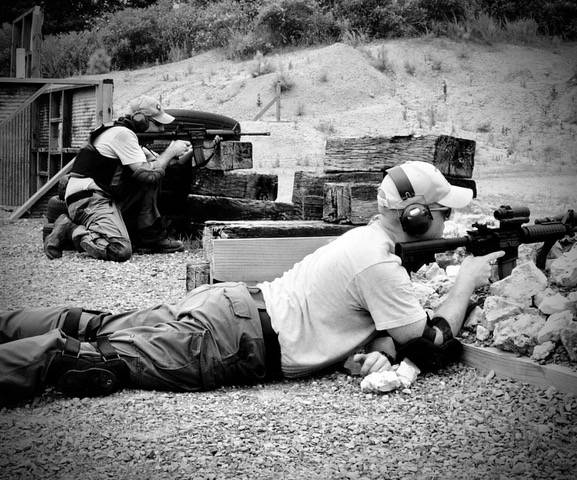
During conversations about self-defense the ability to communication rarely comes up, even among those educated in its importance. And when you bring up “communication,” as a mandatory fundamental, the result is usually a questioning look. Now it’s time to grab a chair, invite the curious to settle in and discuss “communication.”
There are multiple reasons for communicating during a dangerous situation. There are multiple people you need to communicate with prior, during and after the event. And while we interact verbally with people every day – some more than others – communicating with others during a high stress situation – someone is trying to kill – is extremely difficult.
You’re at the mall and, as always, paying attention to what’s going on around you. Danger - that man’s hand is gripping the gun tucked into his waistband. You step over to your significant other, say the prearranged code phrase, followed by “We’re leaving now.” You’re exiting as shots ring out from where you “were.” Communication is key to avoiding and escaping danger. You talk to family/friends, telling them what to do or checking to see if they’re okay. Communication with armed partners is mandatory to co-ordinate actions, fully utilizing the exponential advantage of an armed partner.
In most every situation you’ll need to issue verbal commands to the threat(s). As soon as you identify a possible problem you start issuing commands. “Stop! Do not come closer!” They may comply. If not, it may be time to start creating distance, looking for cover and preparing to draw the pistol. Verbal commands start establishing that you’re the “good guy” – avoid profanity – and witnesses can testify you verbally warned the attacker. It may be necessary to tell bystanders to escape or avoid the threat since they could still be dangerous.
Communicating with partners, or verbally commanding the threat(s) isn’t easy. It’s stressful, and we tend to get lock-jaw. At a time when we need to be communicating we won’t say anything. Practicing your communication skills is just as important as any of the other fundamentals. And make sure to use your “outside” voice. Stress creates auditory exclusion; you’ll have to yell, maybe even physically grab someone in order for them to hear you. Keep your communications short and simple; normally there isn’t any time or the need to get into lengthy, detailed explanations.
At some point you’ll be communicating with responding law-enforcement officers. This is a completely different type of talking. This is slow, deliberate communication at the proper time. Say something too soon, prior to the time you actually recall and understand the correct events and you can be in serious trouble. You can prepare for this – I recommend Ayoob’s book Deadly Force plus his MAG 20 class. This also preps you for communicating with attorneys, family/friends and as you work through the incident even talking with yourself.
Move, Communicate, Use Cover, Shoot if Necessary and Think. The fact that number two is communication should tell you just how important it is. Study, practice and be prepared.
Tiger McKee is director of Shootrite Firearms Academy, which is celebrating its twenty-fifth anniversary. He is the author of The Book of Two Guns, AR-15 Skills and Drills, has a regular column in American Handgunner and makes some cool knives and custom revolvers. Visit Shootrite’s Facebook page for other details.